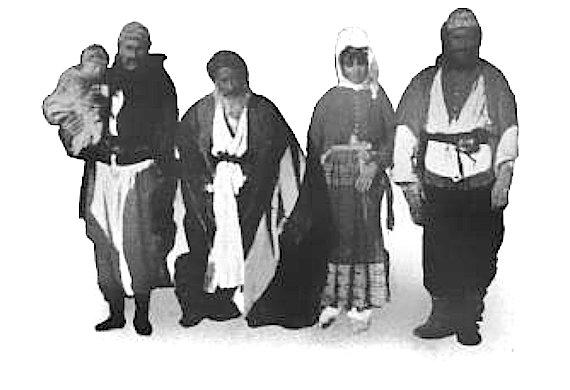A Kurdish Yezidi Family of the Mount Simeon district of northern Syria, at a village near Aleppo, circa 1899
(From Gertrude Bell, Syria: The Desert and the Sown, 1908)
The Kurdish population of northeast Syria is roughly 10 percent of the population. At that time, there were about 3 million people in what is now Syria, thus about 300,000 Kurds. (Syria’s population is now 22 million, with about 2.2 million Kurds and most of the rest Arabs). Most Kurds are Sunni Muslims, but the subjects here, Musa and his family, were members of the Yezidi religion. It has a Persian Zoroastrian heritage but also comprises themes from traditions such as Gnosticism. The name derives from the ancient Persian Izad or “God.” Nowadays there are 10-50,000 Yazidi Kurds in Syria. The increased autonomy of the Kurdish regions from the Baath government has given them more freedom, but they are very concerned by the rise among Arab rebels of al-Qaeda affiliates, who consider Yezidis to be heretics deserving of death.




 © 2025 All Rights Reserved
© 2025 All Rights Reserved